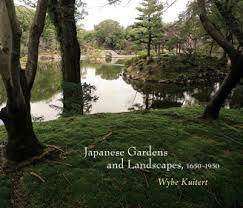 Wybe Kuitert has written two deeply researched books on the history of Japanese gardens. The first, “Themes in the History of Japanese Garden Art” (1st edition 1988, revised 2002 – this later edition is at the Miller Library), is the history from roughly 900 to 1650 CE, concluding when “the practice and theory of garden art became established in a way that does not differ much from our own days.”
Wybe Kuitert has written two deeply researched books on the history of Japanese gardens. The first, “Themes in the History of Japanese Garden Art” (1st edition 1988, revised 2002 – this later edition is at the Miller Library), is the history from roughly 900 to 1650 CE, concluding when “the practice and theory of garden art became established in a way that does not differ much from our own days.”
Kuitert’s new book, “Japanese Gardens and Landscapes, 1650-1950,” brings that history up to near present day. Despite his conclusion in the earlier book, I found this history surprisingly dynamic. During the Edo period (1603-1868), gardens of the “daimyo,” or regional rulers, became quite fanciful. “These were Disney-type re-creations that functioned primarily as leisure environments.”
This was also a time when variegated plants and flowers with unusual and flamboyant forms became popular. As printing techniques became more widely and cheaply available, there was an explosion of published gardening books, codifying some of the earlier customs but with a loss of their symbolism. Kuitert laments this, describing these books as only a “crowd-pleasing version of garden traditions and ideas.”
After Japan opened to the West in the mid-1800s, there was much upheaval in all ways of life, including gardening. Western-style gardens appeared and Japanese garden designers who studied in the West were in high demand.
For local readers, this book’s profile of Jūki Iida (1889/90-1977), the major designer of the Seattle Japanese Garden, will be of great interest. Kuitert reviews Iida’s early training and his developing understanding that there exist two worlds of Japanese gardening: the formal, built garden and the naturalistic garden. By his emphasizing the latter approach, Kuitert credits Iida as “a key figure in democratizing the long tradition of garden-making in Japan” and for making individual gardens more accessible to everyone.
Excerpted from the Fall 2018 Arboretum Bulletin.